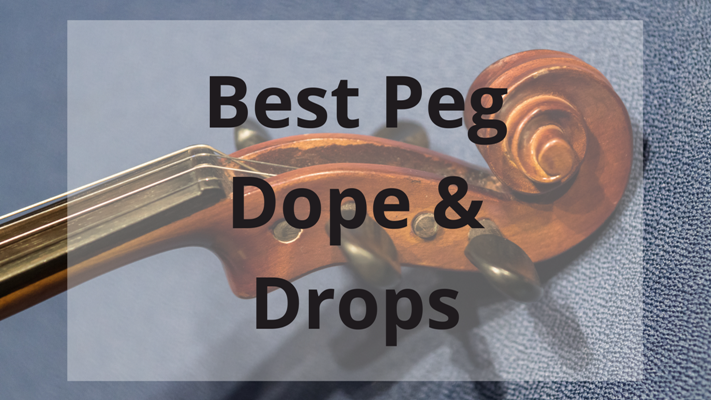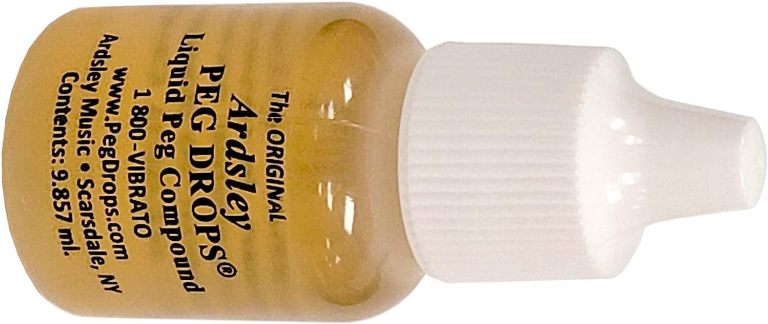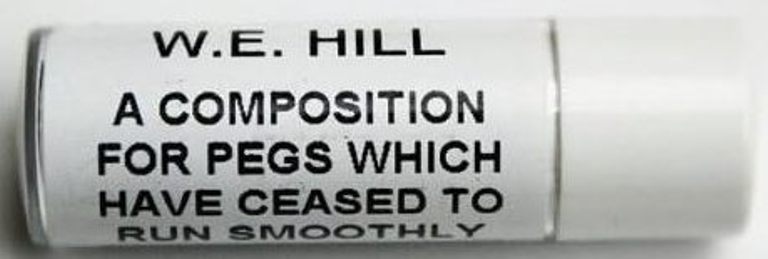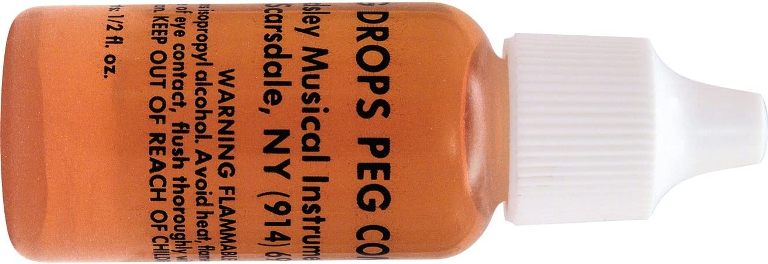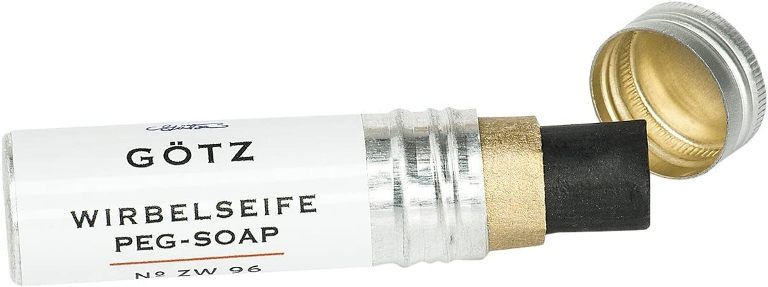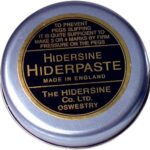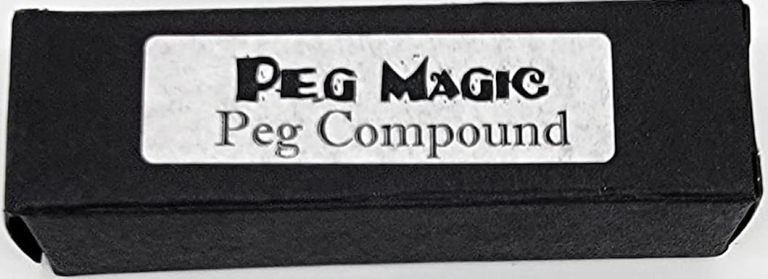As a string player, there are some things that’re indispensable to keep your instrument up and running. These things’re not only crucial – they’d greatly affect your performance especially if you’re going on stage. One thing you would need to make your life easier is a peg dope. There are many different types of dopes for violins, violas, and cellos that can make your life so much better.
With so many different hammers to choose from, people will have a hard time picking just one. This is because they would each come with different features and composition.
To make things easier for you, we have identified ten of the best cellos, violins and violas on the market that can be easily accessed. In order to make things easier for you, we have also discussed the features of each product. This should help you identify the one that would suit your needs best.
What is a Peg Dope
To talk about what the best peg dope products are, we need to know what they are and what they do first. This way you’ll find out if you need them or not.
peg dope is high-quality string adhesive that prevents pegs on your instrument from getting stuck. Pegs come in all shapes and sizes, but they are all made of some kind of contact cement or rubber. You can make them yourself or order them online. They are usually sold either as a block or liquid in a bottle.
Top Peg Dope and Drops Review
1. The Original Peg Drops by Ardsley – Best Peg Drops
Ardsley is not only famous for its peg drops, but they make amazing products that cure squeaking and slipper pegs. One thing we like about this is that you don’t need to remove the peg before applying it. All you need to do is apply one drop and the pegs will be good as new.
2. HILL The Original Peg Compound – Best Peg Compound / Peg Dope
We like this peg compound because it provides a good quality without costing too much time or effort to use. You’ll find that it makes your pegs perform smoother, while reducing slipping and sticking problems.
All you have to do is apply a little bit of this to the right parts of your pegs and they’ll work great, playing tunes on your instrument.
3. The Original Hill Peg Compound
The Original Hill Peg Compound is made from England and is a high-quality peg compound that helps make the pegs smoother when they’re not turning.
This peg compound reduces slipping and sticking and will last for a long time. It’s super-efficient so you don’t need a lot to get the job done.
4. The String Centre Peg Drops
The String Centre Peg Drops would be a great investment as well. These simple fixes will stop your pegs from slipping and squeaking. What makes this such a good solution is that you only need one drop to stop the pegs from slipping, even though you don’t need to remove them. You should know that this a little goes a long way.
5. Goetz ZW-96 The Original Violin Peg Compound
The Goetz ZW-96 Violin Peg Compound Formula will lubricate your pegs and provide maximum tuning while you play. It also provides strong friction to be as dependable as possible.
The graphite peg compound is great for ensuring that the pegs remain lubricated and frictionless for long periods of time. This particular compound is best for stringed instruments such as viola, violin, and cello.
6. Hidersine VM-30H Peg Paste
The Hidersine VM-30H Peg Paste is a special mixture that prevents your hammered and fretted stringed instruments from sticking in place. It’s also very slick, and will prevent your pegs from slipping when tuning.
Pegs can have trouble staying in place when the climate changes which is where peg dope comes in. Apply sparingly and you’ll be able to eliminate those pesky slips.
7. Stravari Peg Compound
We also recommend trying out the Stravari Peg Compound – sourced from all-natural ingredients and completely safe for your violin’s pegs. This peg compound is made of a safe type of grain alcohol. When you use this and grip your pegs firmly, they’ll stay in place. The compound also helps keep your balance on the pegs.
8. OVERSTOCK – Stravari Peg Compound
Stravari Peg Compound is a revolutionary new product that helps maintain grip – perfect for anything you want to keep locked down! Unlike other peg compounds, this product does not gum up.
Analog, more advanced
It provides a better grip as it glides and provides an all-natural experience. Our products are handmade in small batches with many details oriented towards sustainability and quality.
9. HILL Original Peg Compound
Hil 9695 is a simple yet effective peg compound. It helps with smoother spinning pegs and also reduces the chances of self sticking or slipping. With just a tiny bit of this on your pegs, it will help make your instrument go for a long time.
10. PASTA CLAVIJA VIOLIN – Pirastro Peg Compound

Need a Peg Dope
There are a few benefits to using peg dope. It lubricates the peg shaft so that the pegs can turn with ease in the pegbox. Furthermore, it provides some friction to stop the pegs slipping with heavy pressure applied on them.
Tuning pegs is easier than you might think, and it will give your guitar or violin a great sound. It also fixes the string in place to make sure it doesn’t come off when you’re playing your instrument.
Taper pins need some resistance to keep them in place, otherwise they can slip. This would make it hard to tune the guitar. Stringed instruments with non-doped pegs will slip very easily, making them out of tune as soon as the peg slips again.
Alongside the aforementioned reasons to buy peg dope (dabs of glue used by string players on their instruments), it also has a prosaic function when the weather is too hot or too cold. Violin-making has always depended on temperature. So if you keep your violin in a cold place, it would become a lot stiffer, but if you keep it in a hot place, that stiffness might go away.
Using a Peg Dope
There are already many peg dopes on the market that are readily available. They’re easy to use, need just a few drops and some twisting to spread it evenly on the pegs. If you don’t get the pegs on your violin wet, they will be hard to turn and make it tough to play.
When the peg dope comes in paste form, there’s a different way of placing it on the peg. This time, you need to take the peg outside the pegbox. Cover those points with the paste or the stick until there’s no gaps. Check to see if the peg is already slipping; if it does not, you’re good to go.
Alternatives to Peg Dope
Ever kicked off your shoes to find your pegs are slipping? Want some help, there are some alternatives that you can use instead. Peg dope is primarily a solution of rosin in alcohol. If you don’t have it, rubbing some rosin with sandpaper will do the trick. Just rub some low-grade sandpaper on your rosin, then run the peg through it.
If your pegs are really tough to turn, you can use graphite. Just snap the peg out of the box, rub some pencil graphite on it (non-mechanical pencils work best), and reinsert the peg. Your peg should start turning easier.
FAQ for Best Peg Dope and Drops
What are Peg doping and drops?
Players on the violin, viola and cello must constantly keep their instruments in good shape. Peg-doping and drops are the two most common types of materials they use for this.
Peg dope is a type of varnish that is applied to the strings of an instrument so that they do not loosen. It also helps to make the sound softer.
Drops are a liquid solution that a player applies to the strings of his instrument to make it sound better and softer.
Both peg dope and drops are used for violinists, violists and cellists. They help maintain the tune of their instruments by applying it to the strings or using a drip solution.
How often should I use Peg dope and drops?
The answer to this question is not straightforward. It all depends on the type of instrument you are playing and the duration of your practice sessions.
For example, if you are playing a violin, viola, or cello for a long period of time, then you should use peg dope and drops every 30 minutes or so. If you are just practicing for 10 minutes at a time, then it is enough to use it after each session.
Peg dope and drops are used for stringed instruments like violins, violas, cellos. They help prevent the pegs from slipping out of their holes when they get worn down by use.
Why do people use Peg dope and drops?
Peg dope and drops are used to make the pegs on a string instrument easier to turn. They are essential for musicians who work with string instruments such as violins, violas, and cellos.
Peg dope is a paste that is applied to the peg of a string instrument. Peg drops are applied by dropping them into the peg hole. Peg dope is made out of beeswax and rosin powder, while peg drops consist of rosin dissolved in alcohol or water.
How much does it cost to buy Peg dope and drops?
The cost of Peg dope and drops for violin, viola, and cello can vary depending on the brand, type, and size of the product.
The cost of peg dope can vary depending on the brand and type. The average price is $10 to $14 USD per bottle.
Drops are typically cheaper than peg dope. The average price is $5 to $8 USD per bottle.
What is the best Peg dope or drop?
The best peg dope or drop for violin, viola, and cello is a question that has been asked by many musicians. The answer to this question depends on the type of strings that are used on the instrument and the environment in which it is used.
The best peg dope or drop for violin, viola, and cello is not as simple as saying “this one”. There are different types of peg dope or drops available in the market today. It all depends on what you are looking for when choosing a peg dope or drop to use on your instrument.
What are the different types of Peg dope?
Peg dope is a substance used on the surface of string instruments to protect the wood from rosin dust and other contaminants. There are different types of peg dope for violin, viola, and cello. They all have their own specific use cases and are made up of different ingredients.
The most popular type of peg dope is rosin-dipped cotton string. This type is used to make sure that the strings don’t slip off the pegs or get stuck when tuning them. The second type of peg dope is made up of beeswax, oil, and tallow which ensures that the strings are not too slippery when playing them.
Another type is made up of beeswax, oil, tallow, and shellac which helps with tuning issues by coating the string with a protective film.
What are the effects of Peg dope and drops?
Peg dope is a material that is used to coat the pegs of string instruments such as violins, violas, and cellos. It is used to make the pegs less slippery and easier to turn.
Drops are a type of rosin that are applied on the strings of string instruments. They are usually made from pine tree sap or some other type of resin.
Peg dope helps with tuning and making it easier to turn the pegs. Drops help with making it easier for the strings to vibrate because they make them less sticky.
How long does it take for the effects to wear off?
The effects of playing a string instrument can vary. It depends on the person, their age, and the instrument they are playing.
When someone plays a string violin, viola, or cello for an extended period of time, it can cause pain in their hands or arms due to repetitive motion injuries such as carpal tunnel syndrome.
What is the best time to use peg dope and drops?
This is a question that many players ask themselves and there are many different opinions. However, the best time to use peg dope and drops for violin, viola, and cello is after the instrument has been played for a while or when the strings are dry.
The reason why it’s important to use peg dope and drops for violin, viola, and cello is because they keep your strings in tune. They also keep them from getting dry as well as keeping them from rusting over time.
